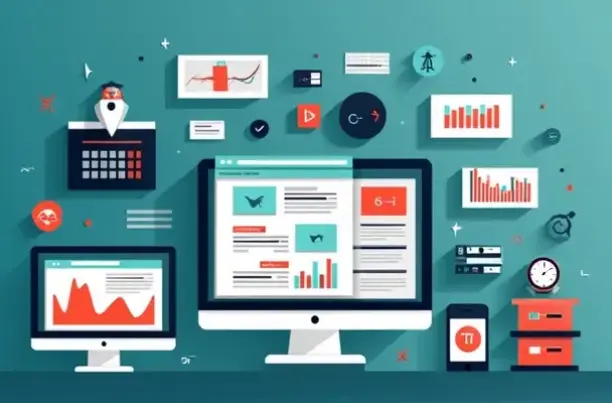Top Development Tools & Trends to Watch in 2025 for Modern Web Developers

The world of web development is evolving faster than ever. In 2025, new technologies, frameworks, and workflows are reshaping how developers build applications. Whether you're a front-end engineer, a back-end architect, or a full-stack developer, understanding the latest development tools and trends is crucial to staying competitive and productive. This post explores the most important tools and emerging trends that are expected to dominate the development landscape in 2025.
🚀 1. AI-Powered Development Tools
Artificial Intelligence (AI) is no longer a buzzword in the development world—it's becoming an essential part of the workflow. Tools like GitHub Copilot, Amazon CodeWhisperer, and Tabnine offer intelligent code completions, real-time suggestions, and even entire function generation based on natural language input. These tools help developers write code faster, reduce errors, and improve code readability.
Why it matters:
- Enhances developer productivity
- Reduces repetitive coding tasks
- Improves onboarding for junior developers
Expect to see even more AI integrations in code editors, project management tools, and testing suites by the end of 2025.
📆 2. Modern Build Tools
Legacy bundlers like Webpack are being replaced or complemented by faster and more developer-friendly tools. Vite, esbuild, and Turbopack (by Vercel) are leading the charge. These tools offer lightning-fast startup and build times, native support for ES modules, and smooth integration with modern frameworks.
Benefits of modern build tools:
- Significantly faster hot module replacement (HMR)
- Simplified configuration
- Improved support for TypeScript and JSX
These tools are especially beneficial for large-scale applications with multiple developers working simultaneously.
📅 3. Low-Code & No-Code Platforms
The rise of low-code and no-code platforms like Webflow, OutSystems, Bubble, and Retool is transforming how apps are built. While these platforms don't replace traditional coding, they allow developers and teams to create dashboards, admin panels, and even full apps much faster.
Use cases include:
- Rapid MVP development
- Internal tools and admin panels
- Marketing websites
Developers are now combining low-code tools with traditional coding to accelerate project timelines.
☁️ 4. Cloud-Native & Serverless Architecture
Serverless computing continues to be a dominant force in modern web architecture. Platforms like Vercel, Netlify, Firebase, and AWS Lambda allow developers to deploy applications and APIs without managing infrastructure.
Advantages:
- Auto-scaling with minimal setup
- Lower operational cost
- Focus on code, not servers
Serverless also makes full-stack development more accessible to frontend developers by handling backend logic through serverless functions.
🔹 5. Component-Driven Development
Component-based design is becoming standard across all major frontend frameworks. Tools like Storybook, Bit, and Radix UI enable developers to build reusable UI components with visual documentation.
Key features:
- Promote design consistency
- Improve team collaboration
- Simplify testing and iteration
This trend is closely tied with the adoption of design systems and atomic design principles in large development teams.
🔐 6. DevSecOps and Automated Security Tools
Security is no longer an afterthought. With rising cyber threats, developers must integrate security into every phase of the development lifecycle. Tools like Snyk, Dependabot, and OWASP ZAP help identify vulnerabilities early and ensure secure code practices.
Best practices include:
- Running automated vulnerability scans
- Keeping dependencies up to date
- Implementing secure authentication and authorization
By 2025, security will be a top priority for developers, not just DevOps teams.
📊 7. Developer Experience (DX) is the New UX
Just as user experience (UX) is crucial for end-users, developer experience (DX) is now a major focus. Frameworks like Next.js, Nuxt 3, and Remix are prioritizing DX by offering intuitive routing, data fetching, and error handling mechanisms.
Why it matters:
- Reduces cognitive load on developers
- Accelerates onboarding
- Improves project maintainability
A smooth DX leads to higher team morale and better project outcomes.
🌟 Final Thoughts
In 2025, the most successful developers will be those who embrace modern tools and adapt to new workflows. Whether you're exploring AI code assistants, switching to serverless, or adopting a component-driven design system, staying current with development tools and trends is key to building high-performing, scalable, and secure applications.
Keep learning, keep building, and stay ahead of the curve!

Leave a comment